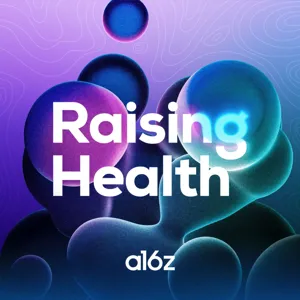Podcast Summary
New CRISPR-based antiviral strategy prevents viral replication: Researchers developed a new CRISPR Cas strategy, PacMan, to cut RNA viral genomes and prevent infection before it occurs, offering a potential solution for challenging viruses like dengue
Researchers at Stanford have developed a new prophylactic antiviral strategy using CRISPR Cas to prevent viral replication, specifically targeting coronavirus and influenza. This approach, called PacMan, uses Cas enzymes to cut RNA viral genomes and customizable CRISPR RNAs to guide the Cas to the correct sequences. Unlike traditional vaccines that train the immune system to recognize and fight a virus, or antiviral drugs that inhibit viral replication after infection, this strategy aims to prevent infection before it occurs. With the ongoing global efforts to combat COVID-19, it's important to note that while vaccines are crucial for achieving herd immunity and returning to normalcy, some viruses, like dengue, can be challenging to target with vaccines due to antibody-dependent enhancement. The PacMan strategy offers a potential solution to this challenge by directly targeting and destroying viral genomes. However, more research is needed to move from the lab to clinical practice.
The coronavirus could exhibit Antibody-Dependent Enhancement, complicating vaccine development: The coronavirus could potentially enhance antibodies and make individuals more susceptible to infection, adding complexity to vaccine development and the search for effective antiviral approaches like CRISPR.
The coronavirus could potentially exhibit Antibody-Dependent Enhancement (ADE), a phenomenon that could complicate vaccine development and make the virus even more challenging to combat. ADE turns the usual goal of identifying people with antibodies upside down, as those individuals might actually be more susceptible to a secondary infection. Vaccines and CRISPR-based approaches are both prophylactics, but they have distinct mechanisms. Vaccines stimulate the immune system to produce antibodies against a dead part of the virus, while CRISPR-based approaches use the technology's natural antiviral properties to destroy viruses. CRISPR, which originally evolved in bacteria to fight viruses, is being explored as an antiviral application for humans. The CRISPR system consists of hardware (CRISPR) and software (bioinformatics), with the former designed to destroy viruses upon identification. This could provide a more natural and effective approach to combating new viruses, as the technology has already been shown to be highly effective in this role. However, the potential for ADE adds an unexpected layer of complexity to the ongoing efforts to combat the coronavirus.
CRISPR-based approach to neutralize coronaviruses: Researchers have developed a CRISPR method to target and neutralize a significant percentage of coronaviruses, including SARS-CoV-2, using specific guides. This approach covers a wide range of coronaviruses and protects against mutations and resistance, but is still in lab stage and requires further testing.
Researchers have developed a CRISPR-based approach to target and neutralize a significant percentage of coronaviruses, including SARS-CoV-2, using just a few specific guides. This method involves bioinformatics analysis to identify conserved regions in coronaviruses, and the creation of multiple CRISPR RNA guides to target those regions. This approach offers the potential to cover a wide range of coronaviruses and protect against mutations and resistance. However, it's important to note that this research is still in the lab stage, and further testing is needed to validate its feasibility in a clinical setting. The researchers used lentivirus as a gene delivery system in their study, but this method would not be practical for use in humans. Future steps include testing the genome editing dynamics and efficiency in a live context, as well as addressing potential off-target effects. Additionally, the researchers also demonstrated the potential of this CRISPR prophylactic against influenza A virus, which adds to its feasibility. Overall, this research represents an exciting development in the field of gene editing and could potentially lead to a universal prophylactic for various viruses, including future coronaviruses.
Exploring CRISPR technology for prophylactic treatments against viruses like COVID-19: CRISPR technology holds promise for creating prophylactic treatments against viruses, but challenges remain in safe and efficient delivery and managing potential immunogenicity. Exploring less immunogenic alternatives and lung delivery methods are being investigated.
CRISPR technology holds great promise for creating prophylactic treatments against viruses like COVID-19, but significant challenges remain, particularly in the areas of safe and efficient delivery and managing the potential immunogenicity of the CRISPR nucleases. The lung could be a natural form of delivery for respiratory issues, and less immunogenic alternatives to AAV are being explored for repeat administrations. The foundation of this technology is a hardware platform, and various delivery methods, such as lipid nanoparticles and non-viral approaches, can be combined. However, it's unclear whether the hurdles of safety, delivery, and immunogenicity will be easier, faster, or more feasible to clear than those facing a vaccine for COVID-19. The future implications of this technology extend beyond the current pandemic, as it could potentially address future viral outbreaks.
Revolutionizing Virus Response with CRISPR Technology: CRISPR technology offers a programmable approach to combat viruses, potentially reducing time and cost for vaccine development, creating commercial advantages, and turning pandemic prevention into a national defense issue.
The development of a broad-spectrum, programmable approach to combat viruses, such as CRISPR technology, could revolutionize the way we respond to pandemics by dramatically reducing the time it takes to develop vaccines for future outbreaks. This approach could sidestep the linear path of vaccine development and potentially save billions of dollars and years of time. Despite the scientific hurdles that would need to be overcome, there are strong business models and incentives for prophylactic treatments using this technology. Unlike antibiotics, which are intentionally underused to avoid resistance, a CRISPR approach is engineered to graft resistance and could be heavily manufactured and distributed, creating a commercial advantage. Furthermore, governments and institutions could invest in building the necessary infrastructure to handle the next outbreak or pandemic, turning it into a national defense issue rather than just a health market demand. The potential for CRISPR to create a true broad-spectrum antiviral for all RNA viruses is an intriguing sci-fi possibility that could further enhance its impact.
CRISPR technology's potential to prevent viral infections: Recent research explores using CRISPR to target coronaviruses and influenza for potential prophylactic treatments. Challenges remain, but engineering biology advancements may help overcome them, leading to promising solutions for viral infection prevention.
Recent research has shown the potential for using CRISPR technology to prevent viral infections, specifically targeting coronaviruses and influenza. This could lead to a broad range of prophylactic treatments for viral infections, which is crucial given the devastating impact pandemics can have on populations. However, challenges remain, including the need for further testing beyond cell culture models. The advancement of engineering biology is expected to help overcome these challenges and bring us closer to this promising solution. Overall, the potential for CRISPR-based systems to prevent viral infections is a significant development in the fight against global health crises.






